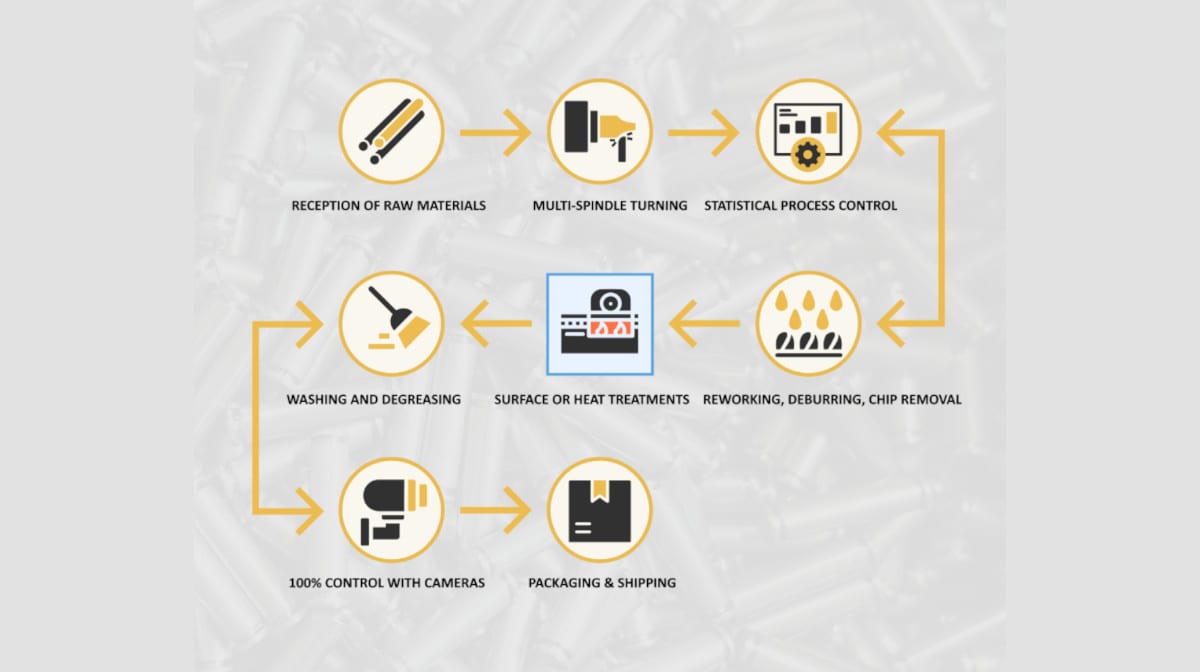How does the production process work at Colombo Giovanni & Figli?

One of the strengths of Colombo Giovanni & Figli, an Italy-based manufacturer specializing in turned parts, is its production process: precise, efficient, and rigorous, capable of optimizing production costs and minimizing waste. But how does it work? Let’s look at it step by step!
From raw material to shipping, the steps of the production process
The production process is divided into several stages, from the reception of raw materials to the final shipping to the customer.
Reception of raw material: brass, free-cutting steel, stainless steel, or aluminum bars are received according to the customer’s order. Upon arrival, incoming materials are inspected to verify diameter, quality certificates, and production batch, then stored in the warehouse, awaiting processing. Once approved, they are stored in the warehouse until processing begins.
Multispindle turning: the bars are loaded into multispindle automatic lathes (6 or 8 spindles), ideal for large batches. Each station simultaneously works on a different part, performing roughing, threading, drilling, parting off, and so on. This is the core of the production phase.
Statistical process control (SPC): during the turning process, samples are regularly taken to check critical dimensions (diameters, lengths, tolerances). The data is recorded to monitor any process deviations and prevent non-conformities.
Reworking, deburring, and chip removal: once machined, the parts retain oils, chips, and other impurities. Therefore, they must be degreased and washed in closed-loop machines using modified solvents or water-based solutions.
Surface or heat treatments: if required, parts are sent to certified suppliers for heat treatments (hardening, tempering) or surface treatments (zinc plating, nickel plating, blackening, anodizing). These treatments provide specific properties such as corrosion resistance, hardness, or improved conductivity.
Washing and degreasing: after treatments, parts may require reworking on transfer machines or CNC lathes for precision finishes. This is followed by deburring, polishing, and removal of residual chips to ensure functionality and safety.
100% camera inspection: for critical components, 100% dimensional and visual inspection is performed using machine vision systems. Cameras check for aesthetic defects, burrs, missing operations, and key dimensions at a speed suitable for large batches.
Packaging and shipping: parts are counted, packaged, and shipped according to customer specifications. Each batch is labeled with code, quantity, and traceability data and shipped according to the agreed schedule.
Thanks to this structured and tightly controlled process, Colombo Giovanni & Figli ensures high-quality standards, production repeatability, and on-time delivery. Reach out through the contact details provided on its online stand to learn more.
- Small metal parts •
- Small turned parts

